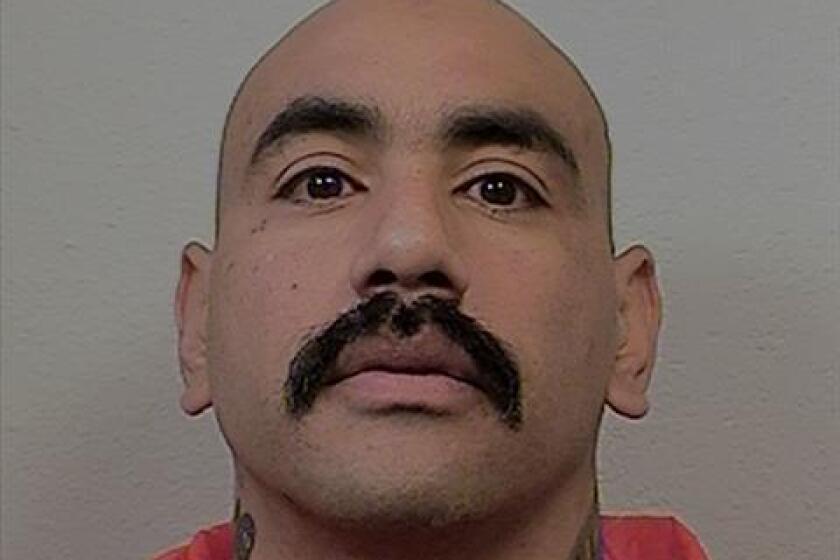Wilson Budget Would Cut Taxes, Add School Funds
Strongly reaffirming his vow to cut taxes, Gov. Pete Wilson on Tuesday offered a revised budget proposal that would boost education funding by $1.7 billion and impose more cuts in health and welfare programs.
The governor said California can afford the 15% tax cut and increased school spending because of surprisingly large increases in tax revenue as a result of a healthier economy.
“With a growing economy, we now have the revenue we need to make the investment to ensure California students get the kind of education that will prepare them for the 21st century,” said Wilson.
Democrats immediately blasted Wilson for sticking with his tax cut and pressing for welfare cuts. Senate President Pro Tem Bill Lockyer lauded the increases in school funding, but said Democrats oppose cuts “to the aged, blind and disabled more, especially when we have increased revenues.”
In all, California will have $2.6 billion more than Wilson expected in January when he first proposed his budget for the 1996-1997 fiscal year, boosting the total spending plan to $63 billion.
Renewing his call to the Legislature to enact the 15% cut in personal income, corporate and banking taxes, Wilson said: “We cannot simply expect economic growth will continue.
“Whether [businesses] will continue to choose to be here depends--whether we like it or not--on the cost of doing business in California, and our taxes are too high. We are an island of high taxation.”
While Wilson pushes the tax cut, he also proposes a major new initiative for schools. Among his proposals, Wilson wants to reduce class size by a third--to 20 students--in first and second grades. The class size reduction will cost $460 million.
Wilson also is proposing to spend $200 million on programs to improve public school students’ reading, $83 million on new books and other school supplies and $140 million on school maintenance projects. In addition, the governor is proposing to give schools $50,000 grants for special projects.
Altogether, Wilson is calling for an additional $1.7 billion to be spent on schools, pushing the total amount earmarked in state and local spending on public schools to $28.7 billion. The state spends 40% of its tax revenues on schools.
If Wilson’s proposal withstands legislative scrutiny, California would be spending $4,714 on each public school student next year, up by $405 from last year’s level.
“This should bring us very close to the national average,” said Maureen DiMarco, Wilson’s top education aide.
Wilson’s budget offers an additional $400 million to the $2.7-billion budget for community colleges, boosting them by 13%. The money will go for equipment and maintenance as well as growth, particularly in suburban areas. The governor’s budget proposes no tuition increases at state colleges and universities.
Wilson’s release of the annual May budget revision marks the start of serious debate in the Legislature over the spending plan for the fiscal year beginning July 1. The governor said he is optimistic that the budget will be approved in time for the new fiscal year, saying: “There is no reason for us not to get a budget within the constitutionally prescribed time.”
But even as Wilson called for the budget’s quick enactment, Democratic lawmakers continued to resist his tax cut proposal and the welfare cuts, while conservatives in his own Republican Party opposed some of Wilson’s proposals for spending on social programs.
“His latest budget proposal continues to distribute billions to the wealthiest in California, financed largely by additional cuts in support for the aged, blind, disabled and poor kids,” said Lockyer, a key Democrat in the summer budget negotiations.
A spokeswoman for Assembly Democratic Leader Richard Katz, who also will be involved in the budget talks, said Katz will not even schedule budget talks until the 15% tax cut is taken off the table.
Democrats contend that the tax cut would reduce the amount that could be spent on schools by billions.
“You can’t give the schools more money with one hand and take back even more with the other hand--and that’s exactly what the 15% tax cut would do,” said Sen. Mike Thompson (D-St. Helena), chairman of the Senate Budget Committee.
To win approval of his budget, Wilson must get a two-thirds vote from both houses of the Legislature--a process that usually lasts long into the summer.
This election year, some lawmakers may be anxious to wrap up the budget early so they can embark on campaigns. But Wilson also will have to contend with continued partisan rancor in the Assembly. Additionally, several lame ducks leaving the Legislature because of term limits may be in no mood to vote for a budget with which they disagree.
The Republican governor also must deal with discontent from the right on such issues as abortion and family planning. A Republican-controlled Assembly budget subcommittee has voted down Wilson’s proposal to fund his $70-million Office of Family Planning, which, among other duties, attempts to reduce teenage pregnancies.
“We don’t want to continue passing the loot to programs that have eaten millions” and don’t deliver, said Assemblywoman Barbara Alby (R-Fair Oaks), the subcommittee chairwoman who voted to slash the family planning budget. But she acknowledged, “Eventually, the governor will get pretty much what he wants.”
Tuesday, Wilson showed no sign of buckling, saying he intends to press for restoration of the family planning money.
“We have got to do that if we are going to make any basic change in what has been described as the social pathology, the entire set of ills that flows from this epidemic of out-of-wedlock birth,” Wilson said. “There is no question that we have to address that. It would be a real dereliction not to.”
To make the revised budget add up, Wilson is counting on $1.25 billion in federal aid. The federal money would cover state health care costs for illegal immigrants and the cost of incarcerating them. It also would come in the form of federal approval of state proposals to cut welfare grants.
Explaining the reason for placing the $1.25 billion in the budget, Craig Brown, Wilson’s finance director, said: “We want to keep some pressure on the federal government.”
But as he called for federal help, Wilson attacked President Clinton for what Wilson said is the Clinton administration’s refusal to approve past proposals to cut welfare grants to the poor. Federal inaction has cost the state $1.3 billion, Wilson said.
Wilson acknowledged that he will have to find $200 million in cuts, partly because the federal government has failed to approve California welfare cuts made in recent years.
“It is nothing less than hypocrisy for this president to say he stands for welfare reform, and continue to ignore California’s pleas,” Wilson said.
Still, Wilson is proposing several cuts in the $14 billion the state spends on health and welfare programs. Among the cuts, Wilson is proposing to:
* Close Camarillo State Hospital, one of only four remaining state institutions for mentally ill and developmentally disabled people. While that would cost about $1 million more this year, the closure would end up saving the state money in future years.
Sandra Smolley, director of the Health and Welfare Agency, said the 800 patients who are not transferred to other state hospitals would be cared for in various communities.
* Eliminate a $68 monthly allowance for 40,000 elderly and disabled welfare recipients who have no kitchens and must eat in restaurants. That would save $20 million a year.
* Abolish state welfare payments to pregnant women during their first two trimesters if they do not have other children. As it is, California issues welfare payments to poor women in their first and second trimesters. The federal government does not provide welfare money until the third trimester. Bringing state policy in line with federal policy would save $14.7 million.
* Reduce monthly payments to aged, blind and disabled individuals to $576 from $596 in high-cost parts of the state, including Los Angeles and much of the rest of California, and to $542 from $568 in lower-cost rural and suburban parts of the state. Such cuts require federal approval.
More to Read
Sign up for Essential California
The most important California stories and recommendations in your inbox every morning.
You may occasionally receive promotional content from the Los Angeles Times.










